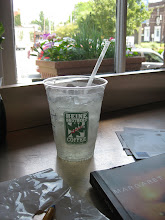The Historical Perspectives and Huxley use of these in BNW
Here are some historical facts/events/ideas which were a part of the 1930s social life that Huxley knew of, examined and integrated in the novel:1.
On the international political scene: the Bolshevik Revolution in Russia, the dictatorship of Mussolini in Italy, and the Nazi Party movement in Germany.2. As far as the economy was concerned, tremendous economic changes in and between individual countries took place - bigger factories, an increase in the consumption and production of manufactured goods, the advent of mass-produced automobiles. Big business used and misused the individual - man became important as a producer and a consumer. Industry exploited the individual by molding him according to its image and likeness. 3. Urbanization takes full swing: as people are moving to the cities, there is noticable change in attitude and point of view. As "one of the crowd" the individual is not responsible for himself/herself, or for anybody else - having lost his or her individuality, people have also lost their respect for individuality.The question is: How is he using this very palpable historical knowledge to weave out the narrative of the novel? Is her creating an allegorical novel?
A 'Brave' New World : On Principles of a Totalitarian State
How can we define a totalitarian state? Was Stalinist Russia or Nazi Germany one? What is the difference between a totalitarian state and a dictatorship?What kind of a society is the one depicted in Brave New World? Is the World State a totalitarian state? Is it a dictatorship? Is it a technocracy?Some thoughts on the matter of the concepts introduced:1. Totalitarian societies are hierarchies dominated by one political party and usually by a single leader. 2.
The party penetrates the entire country through regional, provincial, local and "primary" (party-cell) organization. Youth, professional, cultural, and sports groups supplement the party's political control. 3.
A paramilitary secret police ensures compliance. (The Gestapo, Angka, etc.) Information and ideas are effectively organized through the control of television, radio, the press, and education at all levels. 4.
Totalitarian regimes differ from older concepts of dictatorship or tyranny. Totalitarian regimes seek to establish complete political, social and cultural control, whereas dictatorships seek limited, typically political, control. 5.
Two types of totalitarianism can sometimes be distinguished: "right-wing" extremism (such as fascism and nacism), and "left-wing" extremism (such as communism). Traditionally, each is supported by different social classes. Right-wing totalitarian movements have generally drawn their popular support primarily from middle classes seeking to maintain the economic and social status quo. Left-wing totalitarianism has often developed from working class movements seeking, in theory, to eliminate, not preserve, class distinctions. Right-wing totalitarianism has typically supported and enforced the private ownership of industrial wealth. A distinguishing feature of Communism, by contrast, is the collective ownership of such capital. 6.
Totalitarian regimes mobilize and make use of mass political participation, and often are led by charismatic cult figures. (Mao Tse-tung (China), Josef Stalin (Soviet Union), Pol Pot (Kampuchea) who led left-wing regimes, and Adolf Hitler (Germany) and Benito Mussolini (Italy), who led right-wing regimes. )7.
Right-wing totalitarian regimes (particularly the Nazis) have arisen in relatively advanced societies, relying on the support of traditional economic elites to attain power. In contrast, left-wing totalitarian regimes have arisen in relatively undeveloped countries through the unleashing of revolutionary violence and terror. Such violence and terror are also the primary tools of right-wing totalitarian regimes to maintain compliance with authority.

